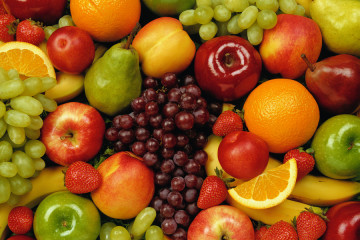Japanese Toys That Can Help Your Child Develop Their Imagination and Fine Motor Skills

By Erika R July 10, 2023
This article describes a variety of Japanese toys that can help children exercise and develop their imagination, coordination, balance, and fine motor skills. They may be used to teach and promote appreciation and understanding of Japanese culture and lifestyle. Children of any culture may benefit from playing with these toys.
Puzzles
Puzzles are mysterious. They can help develop the mind, and when successfully assembled, they can provide a sense of accomplishment. Solving puzzles may nurture self-confidence and problem-solving skills.
Japanese puzzles take many forms. One type is a mystery box that has to be manipulated in a particular way to open it, or figurines and models that can be taken apart and reassembled. Some puzzles may be solved using clues that relate to Japanese culture or mythology.
Jigsaw puzzles are great for young children. They tend to have bright colors and images, fewer pieces, and more significant parts that can be manipulated easily by tiny hands. Older children need more complex challenges, of course, and depending on the child, a 500- or 1000-piece jigsaw puzzle may be appropriate.
Kendama
The kendama is a traditional wooden toy composed of a handle with a ball attached to a string. The end of the handle, where the string is tied, has a peg or spike and two cups on opposite sides. The ball may rest on one of the two cups or may be impaled on the peg, thanks to a conveniently placed hole in the ball that matches the shape of the peg.
The object of the game is to swing the ball and catch it on a cup or the peg. The peg can be different shapes, and the cups may vary in size, providing different difficulty levels for the player. This game develops balance, eye-hand coordination, and other fine motor skills.
Folding Paper
Folding paper becomes a toy when it is used for Origami.
Origami is the traditional Japanese art of folding paper into interesting and useful or decorative shapes. It is a pleasant pastime for many and may help keep the mind sharp.
While Origami is easy to learn, it takes concentration, planning, the ability to follow directions, imagination, and problem-solving skills. It stimulates spatial intelligence and demonstrates geometric shapes and math concepts like halving, doubling, and dividing. Many basic designs are suitable for beginners and children.
Fukuwarai
Fukuwarai is a game similar to Pin the Tail on the Donkey. It is played with blank faces and cut-out facial features made of paper, cardboard, or some other suitable material.
Any face can be used, but the most common Fukuwarai faces are male and female caricatures, or hyottoko and okame, respectively. These faces are traditional and designed to invite good luck into the home and to ward off evil influences.
To play Fukuwarai, blindfolded participants take turns placing facial features on one of the blank facial outlines, one feature at a time, until all the features are used. This kind of play exercises social skills, spatial relationships, imagination, fine motor skills, and more.
Koma
A Koma is a small top made of shell, wood, metal, or similar material, that can be spun by hand or string. They can be traced back to the Heian period of Japan, where special Koma may have been used as fortune-telling devices. Today, koma are quite popular. Beyblade toys, developed by the toy company Takara in 1999, are a modern-day equivalent based on this traditional design.
Koma players may compete in a variety of ways. Most games are based on some variation of the following:
Duration of spin
Type of spin
Trick throws
Knocking down targets
Knocking down or forcing an opponent’s top out of a designated area.
Koma play exercises the imagination, hand-eye coordination, balance, spatial relationships, fine motor skills, and more.
Bean Bags
Bean bags are used for a variety of solo or multiplayer games. Traditional bean bags, or ojami, contain azuki beans and are used to play Otedama, a game that is similar to Jacks.
Typical play involves dropping all the ojami on the floor except one. The player tosses the remaining ojami into the air, picks a fallen ojami off the floor, and then catches the airborne ojami in the same hand. This goes on until all the bean bags are picked up.
The game is flexible and lends itself to creative thinking while it exercises coordination and fine motor skills. Otedama can be a fun party game.
Den Den Daiko
Den den daiko are small hand drums suitable for infants. They are designed to be held in one hand and feature small attached balls that strike the drum when it is rotated quickly. It functions as a rattle or noisemaker for babies and aids in physical development and fine motor skills, particularly in the wrist and hand.
Temari
A temari is a ball made from wrapped and folded silk or silk-like material. It is a toy as well as a form of art. Temari are traditionally given to girls and may be made of discarded or recycled kimonos or similar
materials. Each temari is made using specific construction techniques and may contain a noisemaker like a bell or rattle inside the wraps or a private message of good luck or well wishes.
Temari games vary. Some are simple, like finding a hidden temari, while others are more complex and resemble Hacky Sack. Play may be accompanied by chants and rhymes.
Temari play exercises the imagination, hand-eye coordination, fine motor skills, spatial intelligence, and more. The addition of a chant or rhyme may reinforce other lessons or help teach math, geography, history, or some other important subject at the time, or they may just be silly.
Groundwork For The Future
Playtime at home is an important part of the learning experience that prepares children for entering more complex environments outside of the home. These toys have been used for generations by Japanese parents to help their children develop essential skills.
Every parent wants to give their child the best experience possible. Playtime strengthens the bonds between family members and friends. Make sure to play with your children often, and everyone – you, your family, your child, and society – will reap the benefits.
Despite the popularity of high-tech toys, traditional toys are still important for children’s development. They promote creativity, imagination, problem-solving, social interaction, and teamwork. Traditional toys made from eco-friendly materials and passed down through generations also provide a sense of nostalgia and family history. While high-tech toys have their place, traditional toys remain essential for child development.
sooperarticles.com






No Comment